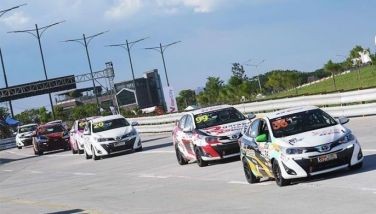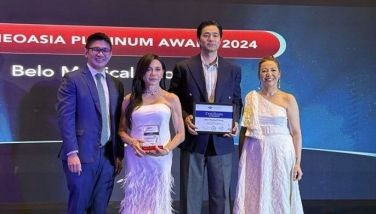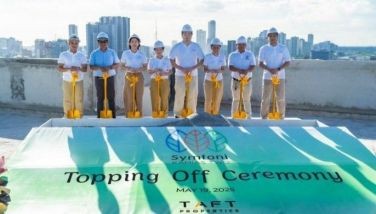Home is where the Pinoy is
MANILA, Philippines - Brothers Marcos and Isidro Sanidad and their wives Cressing and Norma and bosom friends John and Lilly Pareco and at least a dozen other couples come to the Beacon Hill Methodist church in Seattle on Wednesdays and Fridays to dance with their friends, laugh and share jokes and stories and a simple meal that makes everyone connected to the distant country most still call home.
With their once flourishing careers behind them now, the community of retired seniors has found a warm, welcoming kinship with fellow Filipinos who share their lifetime journey in America.
On this particular Friday in August, the weather was extremely good, the sun has been up for a few days in a row and there’s a rummage sale at the church grounds. It’s almost the end of summer and some ladies were wearing colorful Hawaiian dresses with garland necklaces prepared for a luau dance number in another venue after lunch.
But the joy of this Filipino community at this time of year in sunny Seattle was the recent opening of a Filipino fastfood chain (Chowking) and a Filipino supermarket (Seafood City) at the Westfield South Center Mall in Tukwila.
“Napakahaba ng pila (the queues are very long),” according to the seniors, but Pinoys from all over Seattle have been flocking to the mall to get a taste of home and invariably memories associated with the food brands. The Grande halo-halo was reportedly one of the most sought-after in the menu, although this may not be the case for long, since a bakeshop (Red Ribbon) and another fastfood chain (Jollibee) are set to open very soon.
It is not that there are no places for Filipinos to converge in Seattle; in fact the city is bursting with Filipino-ness. There is a Pinoy everywhere and when you come for a visit, it is when you realize that the Filipino in diaspora has transported a little of the Philippines to America. Well, almost.
As in most places with a thriving Filipino community, you get invited to homes of kababayans and get to eat what you’ve always known back home – nilagang baka, fried lumpia, piniritong talong with soy dipping sauce, bangus stuffed with onions and tomatoes, fried rice and tuyo for breakfast, giant crabs and sinigang na upo. Throw in a good conversation while watching TFC (The Filipino Channel) on TV and it as if you’ve never left your cozy barangay.
On weekends, Filipino farmers living in another part of town come to Beacon Hill to sell their produce and market stalls are set up tiangge-style. On Sundays, they congregate at churches to pray. “Nang dahil sa mga Pilipino dumadami ang nagsisimba rito (Because of Filipinos, there are more people attending church service here),” observes Lilly.
It’s nice though to sample a truly American breakfast at Fifth Ave Diner (formerly Denny’s), order a genuine and unbelievably large American burger, shop at JC Pennys and Sears, dine at Salty’s seafood restaurant and cruise around the city in a Lexus zooming past the freeway.
The mosaic of Filipinos’ lives in America, however, is one of extremes. On one side you have success stories like the Sanidads and the Parecos who had fruitful careers and raised beautiful families in their over 30 years in America, but then you’ve also got a hundred or probably thousand others in dire straights.
In fact, Conrado (Sluggo) Rigor Jr., the Filipino executive director of the International Drop-in (IDIC) that hosts the Wednesday and Friday socials at Beacon Hill, has a lot to worry about these days.
Some 77 Filipino war veterans now in their 90s are still living in the city uncared for and surviving merely on their social security pension and dole outs. Most of these elders, Rigor says, came to the United States between 1990 to 1992 after US President George H.W. Bush signed into law a bill granting US citizenship to all World War II veterans who are willing to come to the US and swear allegiance to the US government.
The veterans still in Seattle now are part of the 8,000 Filipinos who availed of the citizenship offer, which Rigor described as one of the most unkind acts for the elderly gentlemen who fought in the war. There are hundreds or probably thousands more living in other parts of the United States.
“When they came to America, most were already in their 70s. They came alone, they have no jobs, no families here, no safety net. Around two decades later they are still here and the reason why they are staying is that they have a pending petition for their families in the Philippines,” Rigor says. But as the reality goes for family petitions, it can take 15 to 20 years and there is no assurance that it could happen in their lifetime and when they pass away, the petition ends.
The family stories are heartbreaking, especially in cases of untimely deaths of the petitioner and the family back home had already sold everything they own to buy a plane ticket to the US. But there were also successful petitions and Rigor says they’ve witnessed many families reunited in a heartwarming tale of patience, determination and love.
“As IDIC is a non-profit organization dedicated to elevating the quality of life of those 55 years old and above, my job was to see how we can make these people happy for the remaining days of their lives. We were looking for programs to help people in our community and so we initiated this family reunification campaign,” Rigor explains.
Many of the elders, he says, have been encouraged by their children to go home to the Philippines but most are holding on, determined to pursue their petitions for their families, despite the difficulties of living alone and uncared for in America. And so Rigor and many organizations in the US are now actively campaigning for the passage of the family reunification bill, which seeks to prioritize and fast track family petitions initiated by war veterans in the name of human compassion.
Tall order maybe for IDIC, which was set up in 1972 by a Visayan priest, Rev. Manuel Ocana, as a non-profit organization dedicated to the care of senior citizens, retirees, widows, first-generation immigrants and war veterans. But as in the Philippines or any part of the world, Filipinos have an unending wish list of things they wish the government or practically just any entity could make right. What the IDIC is doing is probably a small step, a candle in the dark, but it is a step and a small amount of light anyway in a raging darkness.
Our relationship with the US is historical and political as well as personal. Many Filipinos who have friends or relatives in the US have never been to America. And many Filipinos in America have never been to the Philippines. Yet there is an America and there is a Philippines in both countries and not just in the immigrant spaces and narratives often discussed in scholarly circles.
Everyday, hundreds of visitors climb up Seattle’s most famous landmark, the Space Needle, to get a bird’s eye view of the city. Every Filipino who had ever set foot in the city for the first time had probably climbed the 605-foot tower prodded by relatives and friends who usually serve as enthusiastic guides. It is then that you begin to see the big picture and know that thousands of miles away from home, you are still home.
- Latest
- Trending















